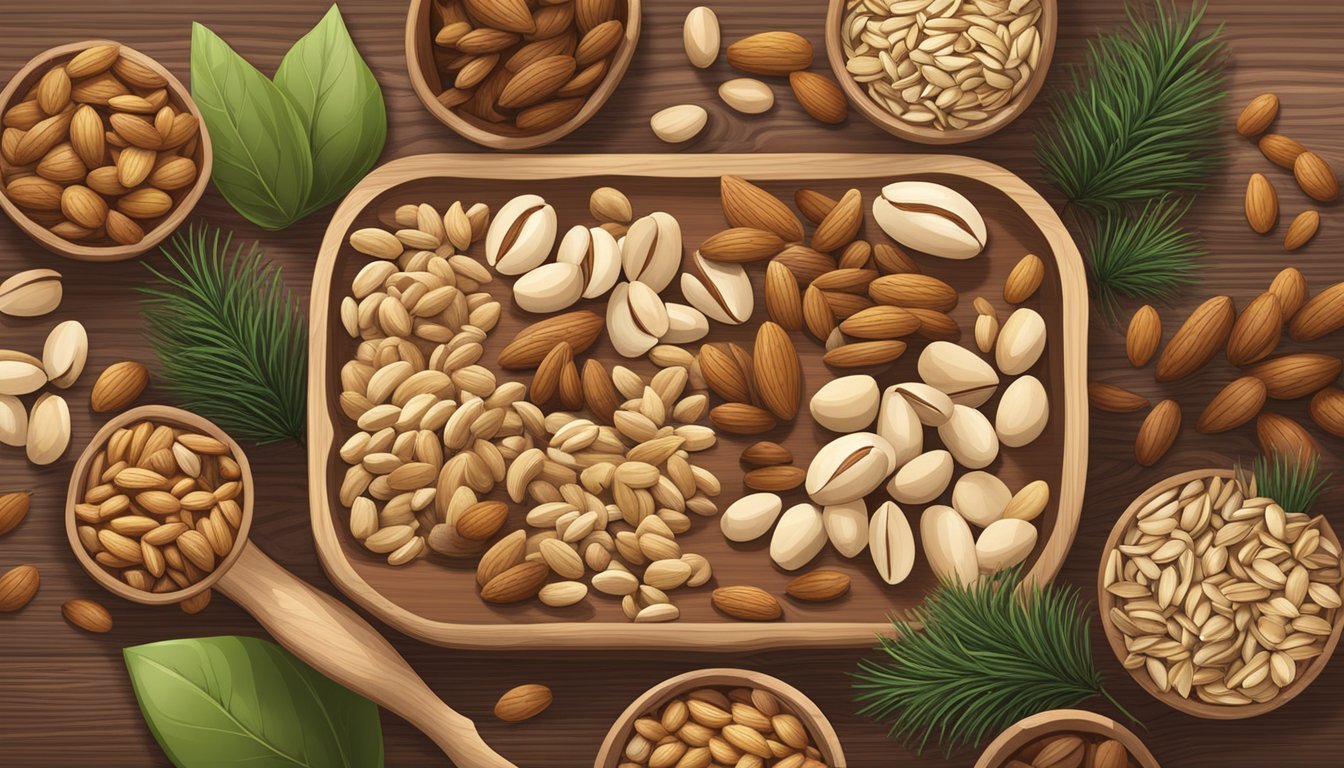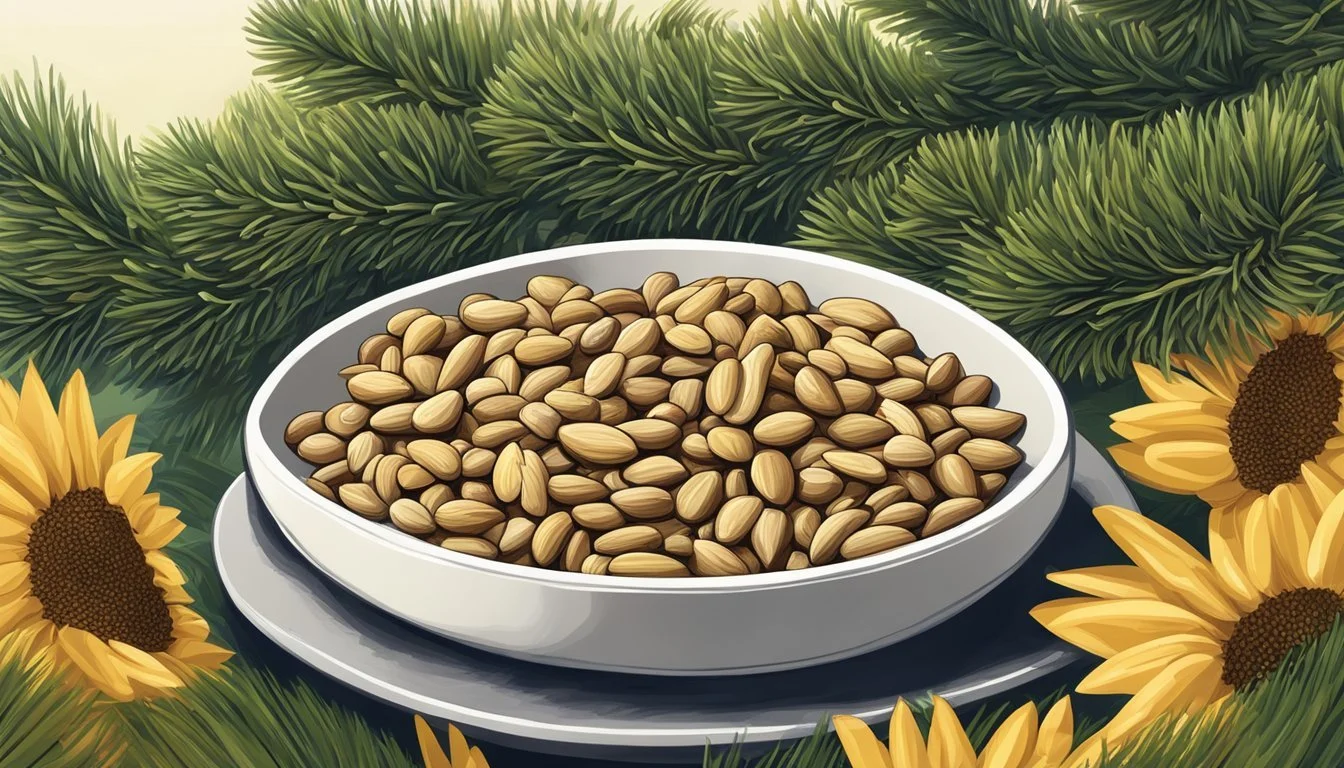Pine Nuts Substitutes
Best Alternatives for Cooking and Baking
When it comes to creating the perfect pesto or adding a delightful crunch to salads, pine nuts are often a beloved ingredient. However, their high cost and unique flavor sometimes necessitate finding suitable substitutes. Cashews are a top choice, offering a similar texture and mild sweetness that can seamlessly replace pine nuts in most recipes.
For those seeking an alternative nut that still provides a rich, creamy consistency, pecans and pistachios stand out. Both nuts are not only affordable but also bring their own unique flavors to dishes like pasta and salads. Pecans offer a slight sweetness, while pistachios deliver a distinct, buttery taste. Each of these options can enhance your culinary creations without compromising the expected texture.
For an even more economical substitute, peanuts can serve as a useful stand-in. Although they have a more pronounced flavor, peanuts can be an excellent addition to various recipes due to their accessibility and affordability. Hazelnuts, with their earthy notes, also make an interesting substitution, particularly in baked goods and vegetable dishes.
Understanding Pine Nuts
Pine nuts are valued for their unique flavor and versatility in various culinary traditions, especially in Mediterranean and Italian cuisines. They are also known for their nutritious properties and are considered a premium ingredient due to their high cost.
Culinary Uses of Pine Nuts
Pine nuts are widely used in cooking and baking. One of their most popular uses is in making pesto, a classic Italian sauce that blends basil, garlic, Parmesan cheese, and olive oil.
They are also commonly sprinkled over salads to add a crunchy texture and rich, nutty flavor. In baking, pine nuts can be found in cookies, bread, and cakes. Their versatility extends to meat and vegetable dishes, where they add depth and richness.
Nutritional Profile
Pine nuts are not only delicious but also packed with nutrients. They are a good source of protein, which makes them an excellent addition for those seeking plant-based protein sources.
Pine nuts also contain healthy fats, including unsaturated fats that are beneficial for heart health. They are rich in vitamins and minerals such as magnesium, copper, manganese, and Vitamin E. These nuts also provide antioxidants and dietary fiber, contributing to overall health.
Pine Nuts' Unique Flavor Profile
The flavor of pine nuts is distinct and cherished in many culinary dishes.
They possess a nutty and slightly sweet taste with a creamy texture. When toasted, their flavor intensifies, adding a savory note to dishes. This unique flavor profile makes them indispensable in certain recipes and often difficult to replicate fully with substitutes.
Reasons Behind Pine Nuts' High Cost
Several factors contribute to the high cost of pine nuts. The harvesting process is labor-intensive, as pine nuts are extracted from pine cones, which can take several years to mature and bear edible seeds.
Additionally, the yield is relatively low compared to other nuts, and the process of shelling the nuts is meticulous and time-consuming. Factors like pine mouth, a condition some people experience after eating pine nuts, causing a bitter, metallic taste, does not deter many from valuing their distinctive flavor.
The combination of these factors explains why pine nuts are one of the more expensive nuts available on the market.
Common Pine Nut Substitutes
This section outlines various alternatives to pine nuts, including other nuts with similar textures and flavors, seeds that offer comparable qualities, and non-nut substitutes that can be used in a variety of recipes.
Nuts and Their Similarities to Pine Nuts
Cashews are often the top substitute due to their similar mild sweetness and creamy texture. They can be used plain or roasted and are particularly effective in sauces and pestos.
Almonds work well in recipes requiring a crunchy texture. They have a slightly sweeter taste and can be sliced, chopped, or used whole.
Walnuts provide a bit more of a bitter flavor due to their brown skin but offer a comparable crunch. They are excellent in salads and some savory dishes.
Pecans bring a buttery sweetness and are a great fit for both desserts and savory recipes.
Hazelnuts also have an earthy, nutty flavor suitable for both sweet and savory dishes, making them versatile substitutes for pine nuts.
Seeds as Alternatives
Sunflower Seeds are a cost-effective option. They offer a similar texture and can be used raw or toasted to enhance their nutty flavor.
Sesame Seeds can add a subtle, nutty flavor to dishes, although they are smaller in size and texture. They work well in both Asian and Mediterranean cuisines.
Pumpkin Seeds, or pepitas, offer a crunch similar to pine nuts and are rich in nutrients. They can be used in salads, baked goods, and as toppings for various dishes.
Non-Nut and Seed Substitutes
Edamame or young soybeans can be an excellent non-nut alternative. They provide protein and a mild, slightly sweet flavor.
White Beans can mimic the creamy texture of pine nuts when pureed. They are particularly useful in sauces and dips, offering a neutral flavor that blends well with other ingredients.
These substitutes allow for flexibility in recipes, accommodating nut allergies while still providing the desired texture and flavor that pine nuts typically deliver.
Substitutes in Specific Dishes
There are numerous alternatives to pine nuts that can be used depending on the dish being prepared. Choosing the right substitute ensures the desired texture and flavor of the recipe are maintained.
Best Pine Nut Substitutes for Pesto
Cashews closely resemble pine nuts in terms of texture and mild sweetness. They provide a creamy consistency perfect for pesto sauce. Use unsalted roasted or raw cashews for the best result. Example Ratio: 1 1/2 tablespoons of cashews for every 1 tablespoon of pine nuts.
Walnuts add a unique earthy flavor. Toasting them enhances their taste, making them an excellent choice for pesto in Italian dishes. Example Ratio: 1:1 substitution.
Pecans are ideal for a sweeter and nuttier pesto variant found in some Southern and Middle Eastern recipes. They offer a creamy consistency similar to pine nuts.
Sunflower seeds are suitable for those looking for a nut-free option. They provide a mild flavor and creamy texture, making them also suitable for individuals with nut allergies.
Nut Allergy-Friendly Substitutes for Salads
Pumpkin seeds (Pepitas) are an excellent nut-free option for salads. They add a crunchy texture and are rich in nutrients, making them ideal for savory and sweet salad recipes.
Sunflower seeds also perform well in salads. They provide crunch and are easily available. Use roasted sunflower seeds for added flavor.
Hemp seeds offer a similar look and slight crunch, ideal for nut-allergic individuals. They blend well in vegetable dishes and stuffings.
Toasted chickpeas bring a crunchy texture without the nut allergens. They work especially well in Middle Eastern salads and provide an enjoyable bite.
These alternatives ensure various dietary needs and preferences are met while still enjoying the delightful textures and flavors traditionally associated with pine nuts in recipes.
Tips for Substituting Pine Nuts
When substituting pine nuts, it's crucial to match their unique flavor and texture. Proper preparation techniques also play a key role in achieving the desired result in your recipes.
Matching Flavor Profiles
Pine nuts have a distinct sweet and nutty flavor that can be challenging to replicate. Cashews are excellent substitutes due to their similar sweetness and mild flavor. Pecans can also substitute well, offering a slightly sweet taste and a creamy consistency.
Substitution ratios:
Cashews: Use a 3:2 ratio (1½ tablespoons of cashews for 1 tablespoon of pine nuts).
Pistachios: These can add a rich, nutty flavor but should be used more sparingly.
When choosing a substitute, consider flavor compatibility with your dish, whether it be for pesto, a salad topping, or a dessert.
Texture Considerations
The texture of pine nuts—crunchy yet creamy—is an important factor. Almonds can serve as a good substitute, especially if they are slivered or sliced to match the size and texture of pine nuts. Hazelnuts offer a similar crunch and nutty flavor, making them suitable for both sweet and savory dishes.
Slivered almonds and sliced almonds are particularly useful in maintaining the visual appeal and texture in recipes.
For recipes where texture is crucial, such as in salads or as a topping, ensure the substitute maintains the desired crunch and consistency.
Toasting and Preparation Techniques
Toasting enhances the flavor and texture of nuts. For the best results, lightly toast cashews or hazelnuts before using them as substitutes. This process brings out their nutty flavor and adds depth.
Toasting tips:
Use a dry skillet over medium heat.
Stir frequently to avoid burning.
Toast until lightly browned and fragrant.
Preparation methods like soaking and peeling may also be necessary for certain nuts, like hazelnuts, to remove any bitterness. This preparation ensures the nuts blend seamlessly into your dish.
By carefully considering flavor, texture, and preparation techniques, you can successfully substitute pine nuts and achieve excellent results in your culinary creations.
Health and Nutrition Considerations
Choosing substitutes for pine nuts involves not only culinary compatibility but also nutritional and health factors. These substitutes vary significantly in their nutrient profiles and allergy risks, influencing overall diet quality and safety.
Comparing Nutritional Values
Pine nuts are known for their healthy fats, protein, and a variety of vitamins and minerals. Walnuts offer a meaty texture and are packed with omega-3 fatty acids, which support heart health. Hazelnuts provide significant amounts of vitamin E, beneficial for skin health and antioxidants. Pecans are slightly sweeter and rich in monounsaturated fats, magnesium, and potassium, which contribute to heart and bone health.
Cashews are another popular substitute, providing a creamy consistency. They are lower in fat compared to pine nuts but offer good protein levels and important minerals like copper and magnesium. Sunflower seeds are a nut-free option with a high vitamin E content and beneficial fats.
Navigating Nut Allergies with Substitutes
For individuals with nut allergies, selecting safe alternatives to pine nuts is crucial. Sunflower seeds and pumpkin seeds are excellent options as they avoid the risks associated with tree nuts and peanuts. Edamame beans are another effective substitute, offering high protein content and essential nutrients without the allergy concerns.
Nut-free substitutes such as roasted chickpeas or hemp seeds can also provide the necessary crunch and nutritional profile needed in recipes. Roasted chickpeas offer fiber and protein while hemp seeds contain healthy fats and minerals like magnesium and iron.
Benefits of Incorporating Nuts and Seeds
Incorporating a variety of nuts and seeds into one’s diet can offer numerous health benefits. These foods are often rich in healthy fats, essential fatty acids, and antioxidants that support overall wellbeing. Walnuts and pecans contribute to heart health with their omega-3 and monounsaturated fats, respectively.
Hazelnuts offer substantial amounts of vitamin E, which helps protect cells from oxidative stress. Sunflower seeds also provide significant vitamin E and are a good source of fiber, aiding in digestive health. Hemp seeds add a high protein content that is beneficial for muscle maintenance and repair.
Choosing the right substitutes ensures the nutritional value remains high while managing any potential allergy risks, ultimately leading to a balanced and health-conscious diet.
Exploring Global Pine Nut Substitutes
Pine nuts are a popular ingredient in many cuisines, but they can be substituted with a variety of other nuts and seeds that offer similar textures and flavors. This section explores different alternatives used in Mediterranean, Italian, and Middle Eastern dishes.
Mediterranean Alternatives
In Mediterranean cuisine, almonds and sunflower seeds often replace pine nuts. Almonds are widely used due to their slight sweetness and versatility. They work well in baked goods, salads, and sauces. Sunflower seeds provide a more cost-effective option and can be used in pestos, grain salads, and even as toppings for vegetable dishes.
Toast these substitutes to enhance their flavor. For example, almonds should be lightly browned to bring out their natural nuttiness, offering a great addition to Mediterranean dishes like tabbouleh or couscous salads.
Substitutes in Italian Cuisine
Italian recipes often call for pine nuts, but suitable alternatives include cashews and hazelnuts. Cashews are ideal due to their creamy texture and mild sweetness, making them perfect for pestos. They can be used in a 3:2 ratio to pine nuts, where 1 1/2 tablespoons of cashews replace 1 tablespoon of pine nuts.
Hazelnuts bring a rich, earthy flavor that's excellent for desserts and savory dishes alike. Unsalted, roasted hazelnuts can be finely chopped and used in stuffing, vegetable dishes, and even as toppings for pasta dishes.
Middle Eastern Substitutes
In Middle Eastern cuisine, pine nuts are often replaced with pistachios and sesame seeds. Pistachios offer a vibrant color and distinct flavor, suitable for dishes like baklava and kibbeh. They add both a visual and textural appeal to various recipes.
Sesame seeds provide a different texture but still offer a nutty flavor that complements numerous Middle Eastern dishes. These seeds can be used whole or ground into tahini for a rich, smooth addition to sauces and spreads like hummus.
Whether used whole, chopped, or ground, these substitutes ensure that the essence of traditional Middle Eastern dishes is maintained while providing flexibility in ingredient choices.






